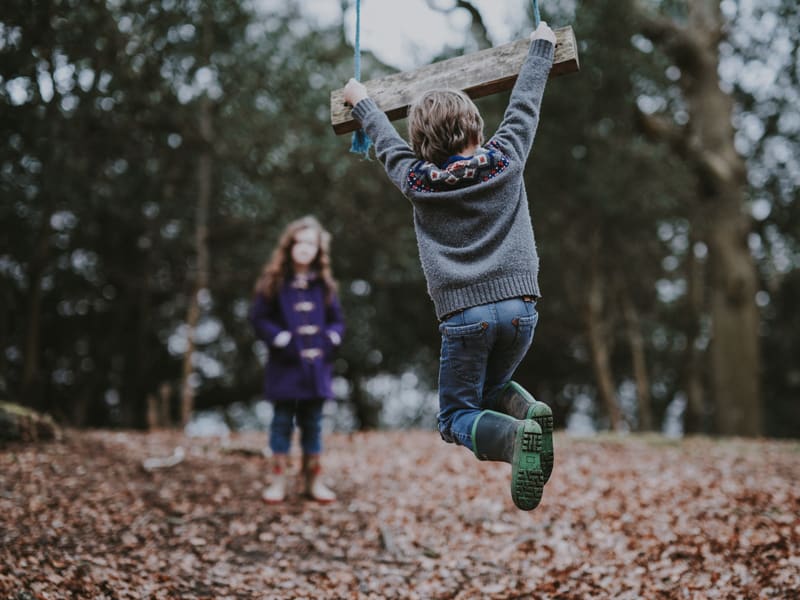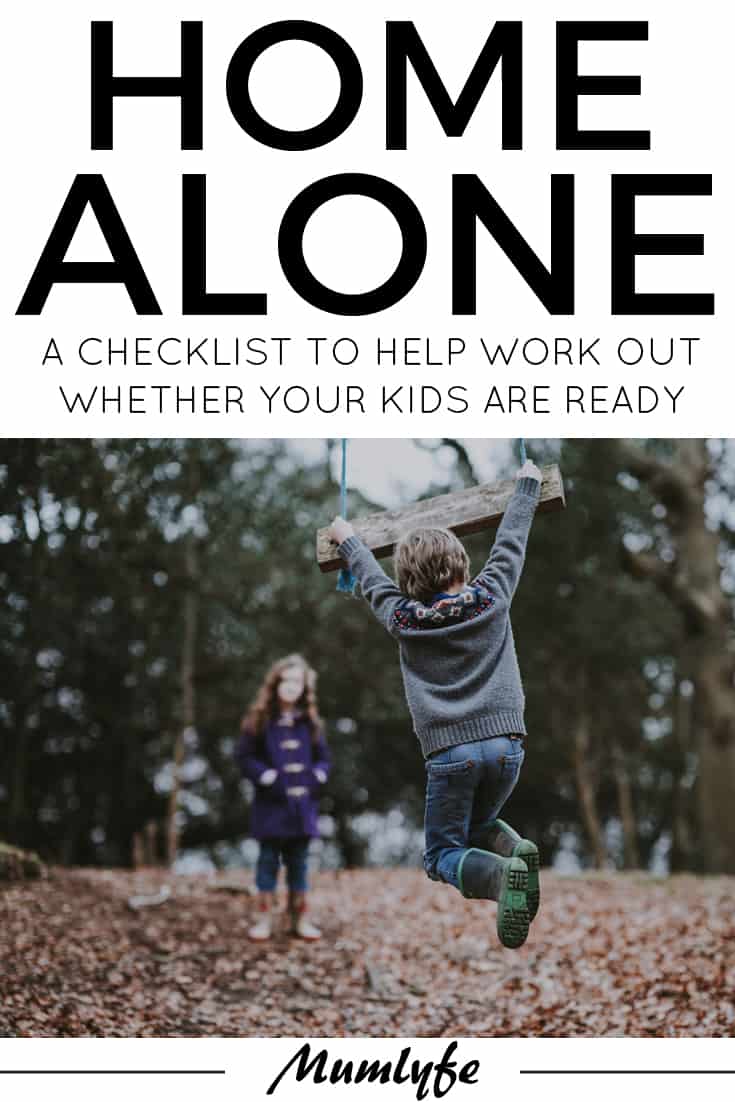Once you’ve worked out when your kids are ready to be left home alone, it’s important to do some planning and have an emergency strategy in place before you go. This Home Alone checklist can help, but remember to consider every aspect of your own home and general lifestyle so you can tailor a home alone checklist that suits your kids and circumstances.
Home alone checklist
Work through this list with your children so they are comfortable.
1. Contact details are shared
Put contact details into each child’s mobile phone and put a back-up paper copy on the wall by the home phone.
Include Mum, Dad, at least one immediate neighbour, and a number of other trusted adults.
Emergency 000 plus separately listed numbers for Doctor, Fire and Police.
Ensure your kid knows how to call all of the people on the list. If you are not going to be local while you are away, remember to let your neighbour and at least one other friend know when you are planning to leave the kids by themselves. Agree a procedure for this with your neighbour: a simple text the night before should be enough.
2. Phones are fully charged
Ensure that the home phone is working and kids’ mobile phones are fully charged before you leave. Make sure the kids know where the charger is and how to operate it if more power is needed. Have a rule in place that mobile phones have to have at least 50% power (or whatever you are comfortable with) at all times.
3. Emergency procedures are clear and practised
You need to be very clear about what your child should do if something unexpected happens. Will they know when they have to act quickly and follow the rules you set out? How will they decide if something is an emergency or not?
Your emergency procedures need to be crystal clear, written down and kept somewhere prominent that the kids can access quickly (smack on the front of the fridge might be a good spot). Things to include:
• Fire. Sample procedure: if the fire alarm goes off, get away from the house immediately, call 000 while you race to Mrs Smith’s house then call Mum or Dad when you get there. The kids will also need to know what to do if they are trapped in a room by the fire, or whether they should find each other before they leave the house or not (suggest not, but that’s got to be your call and your kids’ call).
• Injury. Sample procedure: use your first aid training if the injury is something you know how to treat, then call Mum who will advise next steps. Call 000 straightaway if it looks bad. Make sure the kids know exactly where the first aid kit is and how to use it. A St John’s Ambulance first aid course is a very good idea; they sometimes run courses aimed at kids 7+.
• Stranger danger – Sample procedure: If someone is knocking on the front door, don’t answer the door, move into a room away from the front of the house, wait for the person to leave.
• Upset or other. Remember that what a kid thinks is an ’emergency’ might be nothing like an emergency. If a brother or sister won’t stop crying, that’s an emergency in the eyes of many 12-year-olds. Talk about ‘what to do if’ for various scenarios.
Questions to ask to decide if your child is ready to be home unsupervised
4. Visitors and communications have been covered
Be clear about whether your children can have friends over, or visit anyone during the day. Obviously make sure any friends who are welcome have told their parents that they will be without adult supervision for the day.
They will also need to know how to tackle random phone calls and doorbell rings:
• Phone calls. Sample rule: Don’t answer the home phone unless it’s Mum. (If your kids don’t have mobile phones, have a ‘secret ring’ – like 2 rings, then hang up, then call – so they always know it’s you.)
• Door bell. Sample rule: Don’t answer the front door to anyone, even if you know the person. Mum will call you if there is someone coming that you need to let inside.
5. There are set rules and obligations
Have a specific set of rules in place for times your children are home alone. Some of these rules might include:
• Leave the house – Are the kids allowed to leave the house at all, or do you expect them to stay home for the day? Is going outside into the garden okay? Riding a bike on the footpath outside? Be clear about what is and isn’t okay.
• Pool time – if you have a pool, you will need to think about whether it’s okay for the kids to swim when a parent isn’t home. At our place, no one is allowed near the pool at any time, no exceptions.
• Screen rules – is television okay, video games, etc. Remember that they will probably flout most screen rules, but it’s possible that having a few will keep them moderately contained.
• Who is in charge and what that means – this is particularly important when you have teens close in age.
• Clean routine – If you have any hope of returning to a reasonably tidy house, you’ll need to be clear about what is expected in your absence. Leave a list of chores for the kids to do while you are gone and have set consequences when they don’t do follow through. Things like putting on a load of laundry, folding clothes, making beds, cleaning her room, making lunch, vacuuming, etc.
6. There is more than just screens on offer
Aside from being clear about what kids shouldn’t be doing (see above), it’s wise to leave a list of things they could be doing. Get together and come up with a load of home-based activities that they enjoy and leave the list out when you leave. There’s every chance that they will do some of the things on the list, rather than have their nose stuck in a screen all day. A visit to the library the day before they are home alone is also a good idea.
Try this: 10 outside activities older kids love
7. Some structure is provided
As well as activities and rules, it’s helpful to leave kids with a basic idea of how the day will pan out. Many kids will absolutely need this kind of structure in order to feel in control of the dya.
Even kids who are reluctant to stay home alone might thrive if they are left with a basic schedule:
8 – 8.30am: Make beds and tidy room.
8.30 – 10am: Watch TV, iPads, video games, etc
10-11.30am: Outside time – rake leaves, sweep paths, trampoline, swing, ball games, etc
11.30 – 12.30pm: Prepare and eat lunch, do dishes, pack away, sweep floors, etc
12.30 – 2.00pm: Read books, board games, cards, drawing, etc.
2.00- 3.00pm: Outside time – ride bikes, scooter, skateboard, bug collection, scavenger hunt, etc
and so on…
8. The home is safe and accessible
Finally, you should do a walk-around at home to check that anything unsafe is dealt with before you go. For example, that slippery rug that you’re always telling the kids to be careful of needs to go. You should also make sure the kids can reach anything they need without the use of chairs – so if your glasses are kept in a high cupboard that your 12-year-old pulls a chair over to reach, bring some glasses down onto the kitchen counter for her to use for the days instead.
Make sure they each have their own door key, no matter what your rule is. In the event of an emergency, the kids need to know that they can come and go from the house without worry.
Oh, and make sure the kids know where items like batteries, tea towels, spare toilet paper, etc are kept. We always think that after 12 years+ of living in a home kids know where things are, but, as with so many things, they so often surprise us.
What’s on your home alone checklist?
Image by Annie Spratt




What other families do - creating rituals and rhythm to the day | Planning With Kids
Friday 27th of April 2018
[…] A home alone checklist for parents leaving their kids unsupervised […]